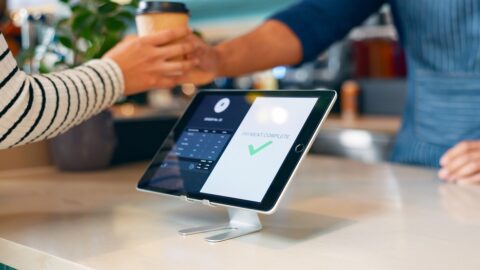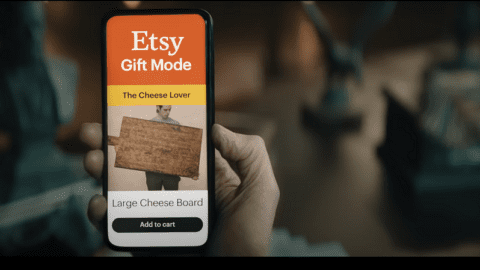 The so-called “retail apocalypse” may have been debunked, but there’s still no question that the industry is in the midst of profound change. Retailers aren’t just looking for ways to tweak the shopping experience; many seek to reimagine every aspect of how they will interact with consumers.
The so-called “retail apocalypse” may have been debunked, but there’s still no question that the industry is in the midst of profound change. Retailers aren’t just looking for ways to tweak the shopping experience; many seek to reimagine every aspect of how they will interact with consumers.
Pano Anthos, Founder and Managing Director, XRC Labs, brings a perspective that is both future-oriented and grounded in today’s retailing requirements. He has identified five key themes that are reshaping store-based retail:
- Bringing The Store To The Customer;
- The Store As Experience;
- The Store As Platform;
- Stores As Part Of The Circular Economy; and
- The Store As Manufacturing Plant
Anthos delved into the themes in detail, and provided examples of how they are being brought to life by several of the companies that were part of the recent “graduating class” for XRC Labs, an innovation accelerator that runs two 14-week programs each year bringing together entrepreneurs, brands, retailers and investors.
Advertisement
1. Bringing The Store To The Customer
The most valuable commodity in the world now is time. Driving to the store, wandering the aisles and going to the point-of-sale to check out is all time that’s being absorbed by the store. They’re also examples of things that have been eradicated by Amazon, which has focused on expediting the efficiency and effectiveness of shopping. From the retailer’s point of view, if the store is waiting for people to show up, that’s a pretty poor customer acquisition vehicle. Retailers need to go to the customer and entice them with some sort of retail experience.
Several companies in our recent XRC Labs Cohort are working to solve this issue. Wondermile is a proximity commerce platform that aggregates the inventory of local stores and exposes it to customers in a way that simplifies the buying process. Say the category is shoes — it would give you the availability of all shoes within a given radius. This is useful if you know specifically which shoe you want, or the kind of shoe you want, because it will tell you ‘Here are the vendors that have this shoe in-stock, available now.’ The solution can even manage the pickup and delivery process for the stores to bring the merchandise directly to the consumer.
Another innovative company connecting consumers with retailers is Cherry Pick AI, which monetizes social media comments. Most companies now have some kind of listening capability with social media, but these listening tools do nothing to convert expressed interest into purchases. Cherry Pick AI is using natural language processing and machine learning to distill purchase intent from social media comments. They can operate all the way from the top of the funnel, with a consumer simply expressing interest, to further down — someone saying ‘I want this now’ on a social platform. The program ties social media logons and personalities to an existing email identity; it can launch email campaigns or ads to the consumer through the enterprise database, and target them right away through the comments that are being shared, down to the product level.
Kid Things uses text-based messaging to provide a communications channel between parents and a concierge/online stylist, to help people buy things without having to churn through multiple e-Commerce sites. It uses AI to capture 90% of requests and provide responses that are based on the consumer’s profile and purchase history, and it’s already showing conversion rates of 40%. For example, if a parent says ‘I need a pair of shoes for my four-year-old,’ the program will understand sizes for kids that age, and also be able to identify that a consumer is more of a Keds customer than a Balenciaga shopper.
The last one in this category is Affinity, which bring the power of customer surveys to e-Commerce platforms, much in the way that Stitch Fix does. Consumers fill out a quick style survey — they have completion rates of up to 90% — to distill a ‘fashion genome’. Essentially, they are distilling the entire content of an e-Commerce site down to what you, the individual customer, would like, and providing a virtual stylist as well.
2. The Store As Experience
Being able to identify customers within the store is the biggest gap in today’s merchandising and consumer interface, but one way to address it is via facial recognition. The new Apple iPhone is selling this as a way to simplify the login process. Facenote expands this principle by allowing customers that opt in to submit a selfie via various channels. Within 10 seconds, you can be recognized anywhere the software is being deployed in the cloud. This isn’t for everyone, but retailers using this solution could identify and greet their VIPs as they walk into the store with specific information: ‘How did you like the new shirt you bought last week?’ That’s far more effective than the rote ‘How may I help you?’ query, and it’s certainly more effective for someone that has spent $10,000 in the store within the past three months. The technology is already out there; Facebook uses facial recognition technology for tagging people.
3. The Store As Platform
This relates to stores becoming places that don’t simply house owned inventory, but that provide access to the products customers want. We’re seeing this with electronics retailers like Best Buy — they are carrying products that they don’t own, and when a customer buys them, they are drop-shipped from a third party while Best Buy takes its cut of the transaction.
The solution here, from Trade Monday, is specifically for marketplace sellers. The company already has more than 200 customers in Hong Kong alone that are using this platform. Trade Monday provides reporting to these sellers, on a product level, not just about what is selling in different marketplaces but what their profitability is. They can manage profit margin visibility across multiple marketplaces, including Amazon, Alibaba, eBay, etc. For example, a Nikon camera might be selling well on eBay U.S., but it’s selling even better on eBay UK, and because the duties and total landed costs of fulfilling are lower for the latter, the margins are much better. Previously, this kind of calculation had to be done manually with Excel spreadsheets.
4. Stores As Part Of The Circular Economy
I believe stores should participate more in the rental/leasing economy. Outside of a Lowe’s or a Home Depot that allow you to rent tools or a leaf blower, stores are mostly transactional. But the circular economy opens up new opportunities. A company called Convey has an apparel leasing program that’s the equivalent of the Certified Lexus leasing program for cars. I could see there being a Certified Coach or a Certified Tory Burch program. The way it works is the consumer returns lightly used merchandise after they are done with it and gets a store credit for it. The store then leases it again, getting cash up front, and also gets a customer coming into their store with a credit, opening up the possibility of other sales. Rent The Runway already has pioneered a variation on this concept as a subscription service.
5. The Store As Manufacturing Plant
The future of supply chains isn’t in China or Vietnam; I believe it will be local, literally in the store itself. We’ve already seen some of the potential of 3D printing; Nimbly provides an on-demand 3D knitting platform to create knitwear apparel. Its solution powers the Shima Seiki machines, which can generate whole garments in 30 minutes or less. Ministry of Supply uses the machines, which are approximately six feet long and four feet high, to showcase how their garments can be created with no waste or pollution. There are personalization capabilities for consumers; they can specify that they want yarn from Italy rather than Argentina, for example.
This is on-demand manufacturing that pushes the supply as close to the consumer as possible, So instead of building a forecast 18 months in advance and having it produced in China, then shipped and sold — or not sold, as 30% of some items are not —now you only build what is demanded. While this won’t cover all aspects of knitwear, it does address the odd sizes and outlier colors that end up at off-price retailers because they don’t sell. Nimbly also prices this the same way that Amazon Web Services does, on a per-use basis. So, the retailer doesn’t have to buy or even lease the machine, they just pay for what they actually use.
Applications for the next XRC Labs 14-week program, which begins in January 2018, are now being accepted.









